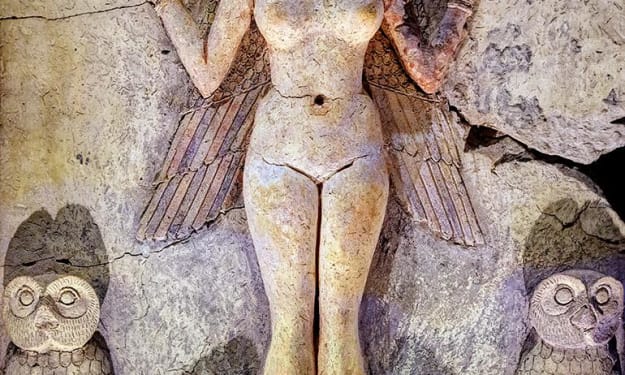The Mystery of Apollo 13 Mission
A Tale of Courage and Ingenuity
n the vast, silent expanse of space, Apollo 13 cruised toward the Moon. Launched on April 11, 1970, it was to be NASA's third lunar landing mission, with astronauts Jim Lovell, Jack Swigert, and Fred Haise aboard. But the mission, meant to explore the Fra Mauro region of the Moon, soon became a gripping saga of survival against the odds.
Three days into their journey, at 55 hours, 54 minutes, and 53 seconds into the mission, the crew was conducting a routine cryogenic tank stir. What should have been an uneventful procedure turned into a nightmare when an oxygen tank exploded. Swigert’s calm yet urgent words to Mission Control in Houston, “Houston, we’ve had a problem,” became the harbinger of a struggle that would captivate the world.
### A Catastrophic Explosion
The explosion crippled the Service Module, causing a loss of oxygen, electricity, and water. This severely limited the Command Module, Odyssey, which relied on these systems to sustain the crew. Lovell looked out the window and saw the terrifying image of gas leaking into space, a sign that their vital resources were hemorrhaging into the void.
Quickly, the focus shifted from landing on the Moon to saving the astronauts' lives. The Lunar Module, Aquarius, originally designed to land on the Moon, became their lifeboat. Aquarius had its own independent life support system, but it was only meant for two astronauts for 48 hours, not three astronauts for the nearly four days needed to return to Earth.
### Ingenious Solutions
The immediate challenge was ensuring the crew had enough oxygen and power. The explosion had also knocked out the system that removed carbon dioxide from the air, meaning the astronauts were at risk of suffocating on their own exhalations. Engineers at Mission Control devised an ingenious solution: using materials on board, the crew would create an improvised adapter to connect the square Command Module lithium hydroxide canisters to the round openings of the Lunar Module’s system. This makeshift device, cobbled together with plastic bags, cardboard, and duct tape, worked perfectly, allowing the astronauts to breathe safely.
### Navigating Home
The next hurdle was navigation. Without the computer guidance from the Command Module, the astronauts had to manually navigate their way back to Earth. Using a sextant and the Sun as a reference point, they performed crucial course corrections. These maneuvers were executed with precision under Lovell's steady hand, a testament to the crew’s skill and training.
### Rationing and Survival
Life aboard Aquarius was harsh. The crew rationed their limited food and water supplies, and without adequate power, they endured freezing temperatures. They donned their spacesuits to stay warm, while condensation formed on every surface, making the small cabin even more uncomfortable. Communication with Houston was their lifeline, with constant back-and-forth as ground teams worked tirelessly to devise and test solutions for every conceivable problem.
### The Silent Hero: Mission Control
Back on Earth, the Mission Control team, led by Flight Director Gene Kranz, worked around the clock. Their mantra, “Failure is not an option,” drove them to find innovative solutions to unprecedented problems. The ground team’s creativity and persistence were as crucial as the astronauts’ bravery.
### The Final Hurdle: Re-entry
As the crew approached Earth, the final challenge was re-entering the atmosphere. The heat shield of the Command Module was intact, but the critical re-entry batteries were drained. In a feat of engineering brilliance, the team devised a complex power-up procedure to transfer the minimal remaining power from Aquarius to Odyssey, ensuring that the Command Module systems would work during the critical re-entry phase.
The astronauts jettisoned Aquarius, their lifeboat, with a mixture of relief and sadness. Aquarius had kept them alive but was now no longer needed. The Service Module, with its gaping damage, was also discarded. As Odyssey re-entered the atmosphere, the world held its breath.
### Against All Odds
Three minutes of radio silence during re-entry felt like an eternity. When Odyssey finally splashed down safely in the Pacific Ocean on April 17, 1970, the world erupted in joy and relief. The recovery ship, USS Iwo Jima, swiftly brought the astronauts aboard, where they were greeted as heroes.
### Aftermath and Legacy
Apollo 13 is often called NASA’s "successful failure." Although they never reached the Moon, the mission showcased the resilience, ingenuity, and teamwork of both the astronauts and the Mission Control team. The lessons learned led to improvements in spacecraft design, safety protocols, and emergency preparedness, benefiting future missions.
The story of Apollo 13 transcends the boundaries of space exploration. It is a testament to human spirit and ingenuity in the face of overwhelming adversity. The world watched as three men, isolated in the vastness of space, fought for their survival with the support of an equally determined team on Earth. Their story remains an enduring symbol of courage, resourcefulness, and the relentless pursuit of solutions in the most dire of circumstances.
### Epilogue: Reflections
Years later, Jim Lovell reflected on the mission, saying, "We didn’t lose the mission; we just changed our destination." His words encapsulate the essence of Apollo 13 – a mission that, while diverted from its original goal, achieved something perhaps even more remarkable. It demonstrated that through innovation, collaboration, and sheer willpower, humanity could overcome the most daunting challenges.
Apollo 13’s legacy continues to inspire. It is a story of hope and triumph, reminding us that even in our darkest hours, we have the power to prevail. The mystery of Apollo 13 lies not in the explosion that jeopardized it, but in the extraordinary human endeavor that turned a potential tragedy into one of history's greatest tales of survival.
About the Creator
Dabasish Pal
Hey there, story lovers! I'm Dabasish Pal, and I write the kind of stories that keep you up way past your bedtime ( don't worry, I've been there too!). Get ready for some twist, turns and maybe even few feels.
Enjoyed the story? Support the Creator.
Subscribe for free to receive all their stories in your feed. You could also pledge your support or give them a one-off tip, letting them know you appreciate their work.







Comments (1)
Nice. Educational story